Gardening With Children – Top 5 Successful Seeds to Plant
If you have ever done any gardening with children, you will know that they are eager and can’t wait for their seeds to grow. They also want to help in every way possible, from digging to watering to harvesting.
In the years I have been gardening with children, I have found that one of the most important aspects of gardening is planting things that are guaranteed to grow. I am going to share my gardening secrets and reveal the Top 5 Successful Seeds to plant with children.
Gardening with Children
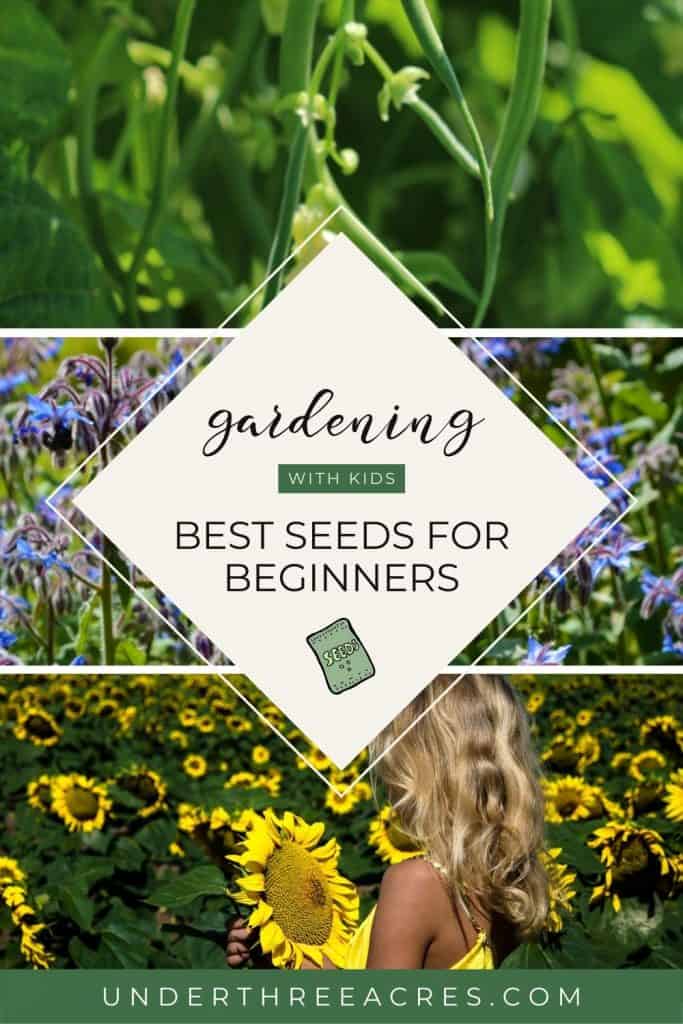
1. Peas and/or Sweet Peas
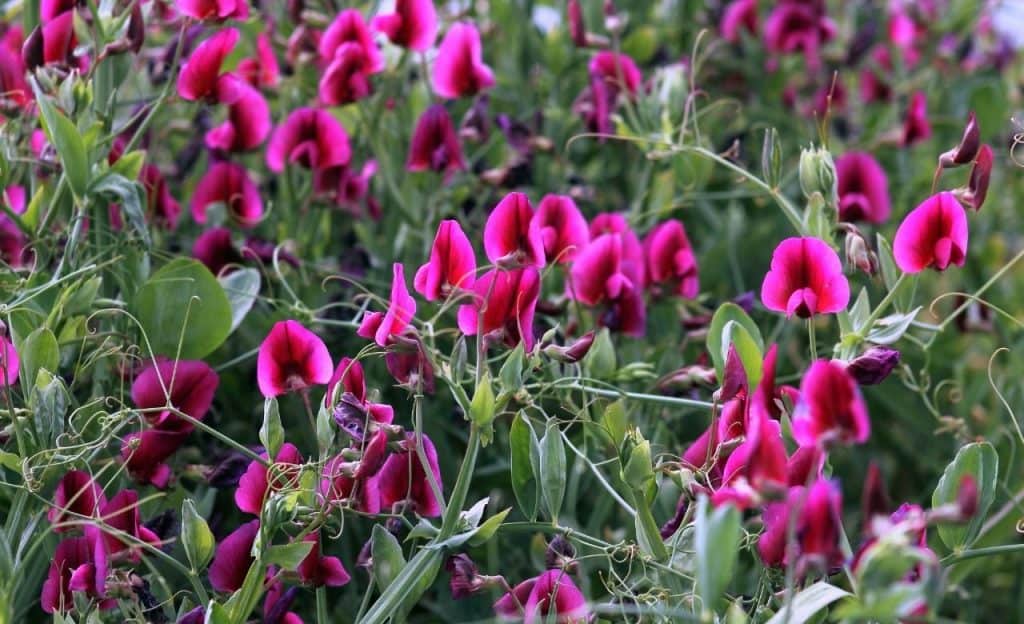
Peas and sweet peas are fast-growing and pretty uncomplicated to grow. You can choose between edible varieties of peas and the flowering type of sweet peas. The seeds can be quite literally thrown into the ground early in the season and they grow in a short period of time. For the best results (but not necessary), soak the seeds overnight. Soaking the seeds softens them and helps them to sprout even quicker.
If you are going to plant sweet peas (flowers) and snow or sugar peas (edible), be mindful that you plant them in separate beds. Sweet peas are poisonous, especially the flowers and seeds.
2. String Beans – green, yellow or purple
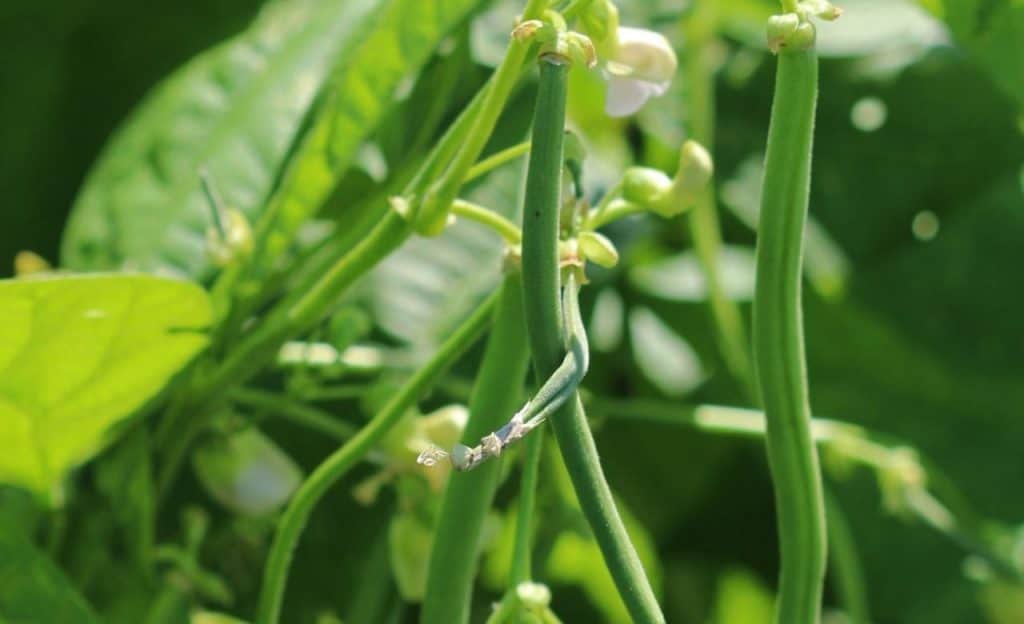
Another favorite garden variety seed that yields plenty and is extremely easy to plant is the string bean or bush bean. They are a little more tender than the peas and don’t like frost. So, wait until the danger of frost has passed before planting them outdoors. If you want, you can easily start these indoors, although this is absolutely not necessary at all. For fun, grow purple beans instead of the yellow or green varieties.
It is fun for kids to grow this variety because they don’t stay purple when they are cooked. You can get your kids to hypothesize what color they think they will be once they are cooked.
*In case you’ve never tried these, they turn green.
3. Marigolds
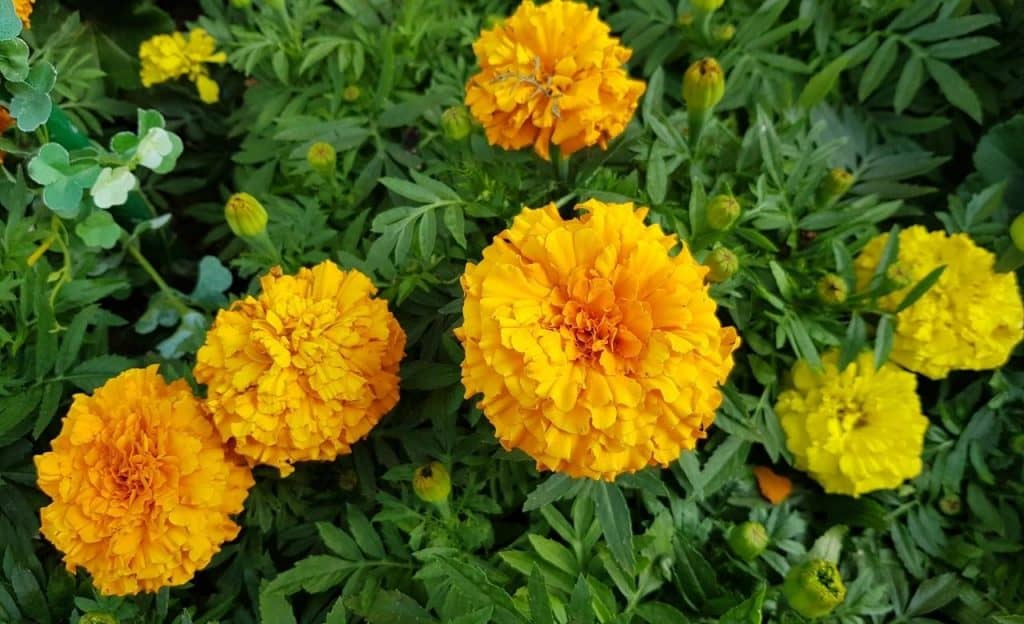
Marigolds are happy flowers. If kids like dandelions, then they will most definitely love the marigold. Marigolds are another no-fuss flower that you can either start indoors about 6 weeks before the last frost or directly in the garden after the threat of frost has passed. They prefer lots of sunlight, but we have had success growing them in shadier areas of the garden as well. Not only are they pretty and easy to grow, but they are highly beneficial plants.
Marigolds are known to repel some garden pests such as the mosquito, tomato hornworm, aphids, thrips, and squash bugs. They also are beneficial since they attract bees, butterflies, and ladybugs to the garden. I like to plant marigolds in between my vegetables and along the edges of my flower beds for these reasons. Marigolds also make pretty container garden plants. At the end of the season, you can let the flower heads dry on the plant and collect the seeds to plant next spring.
4. Sunflowers
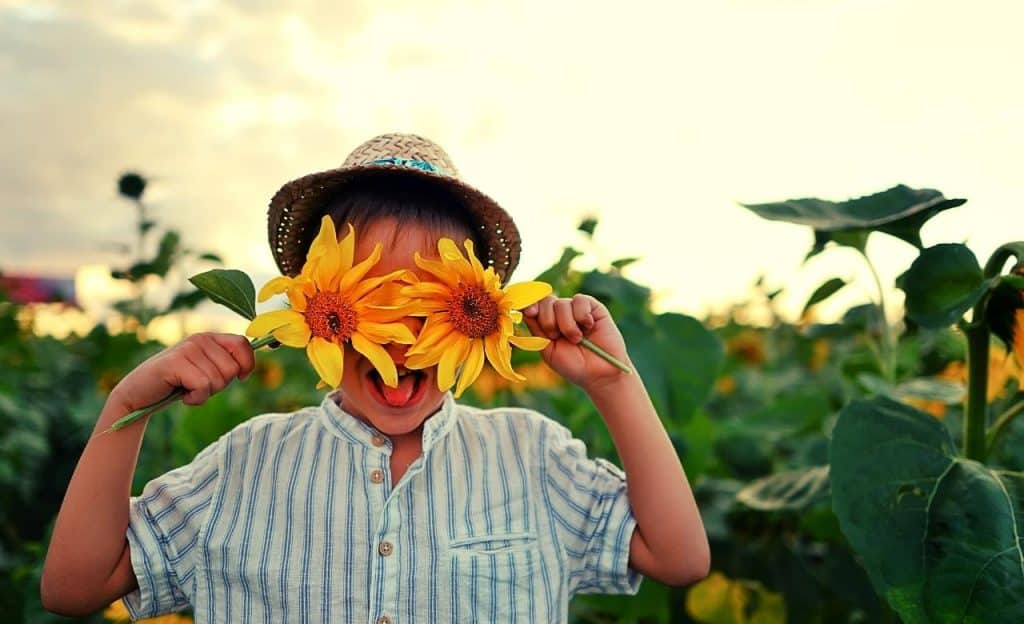
Sunflowers are one of the flowers that one of my boys grows every year. Every year, since he was very little, he has planted sunflowers. They are his favorite flower. It is easy to understand why. Just find a sunny patch of dirt, sew a handful or two of seeds, water and watch them grow. There are many varieties of sunflowers to choose from. There are mammoth ones, ones that are more yellow, orange, or even rust-colored.
The mammoth ones grow quite tall and others a few feet, but most varieties grow to 5 or 6 feet tall. The beauty is that you can try several different kinds and have success. Last fall, the goldfinches came and feasted on our sunflowers. It was so neat to see them visit. Other years, we harvested the head and roasted the seeds to eat. Sunflowers are one of those plants that are quite versatile and lend themselves to studying.
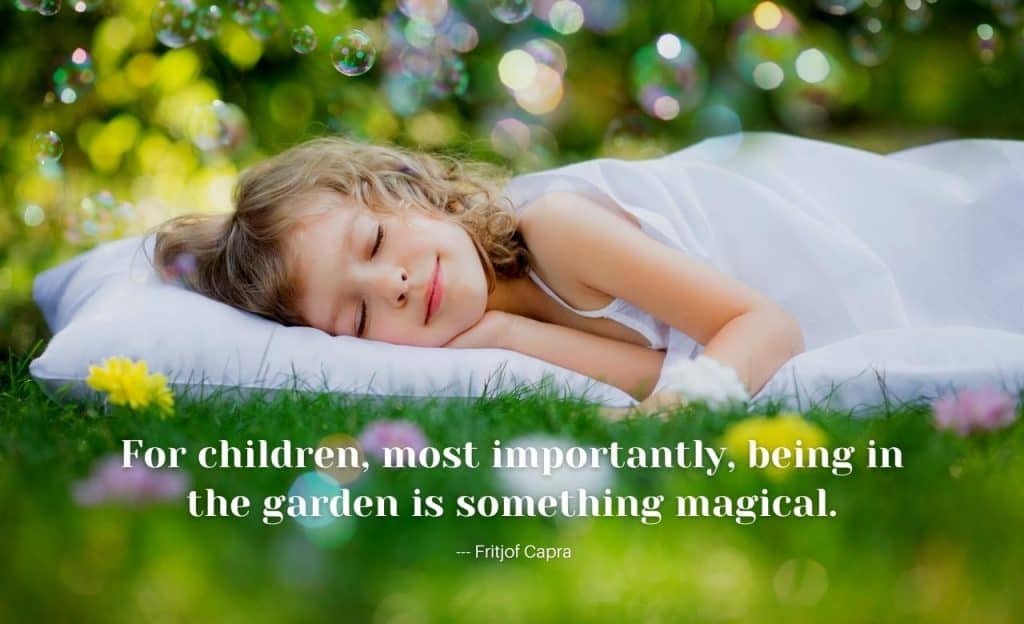
5. Borage
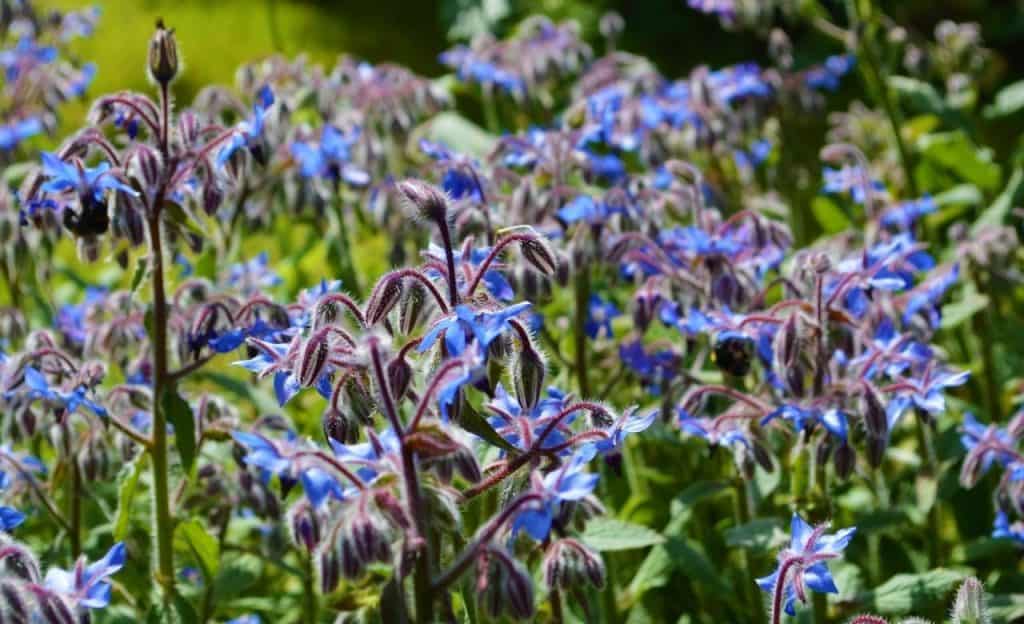
This is my secret favorite. These plants are beautiful. The leaves are fuzzy, the flowers and leaves are both edible and they attract bees and butterflies.
These beauties are very pretty and easy to grow. Actually, once you have them in the garden once, it is hard to get rid of them. They self-seed and you will be graced with new borage plants summer after summer.
Your children can plant borage seeds once the danger of frost has passed and observe how quickly they sprout and grow. If you plant them in your strawberry patch, you will attract more bees and yield more strawberries.
Borage flowers are fun to freeze in ice cubes to add to summer drinks or add them directly to your summer salad or lemonade. If know how to, you can sugar them and use them to decorate cakes.
Our winters here are long and nature study is much more difficult here than in other parts of the world. That’s why we use summer to do nature study and use this FREE journal page and the pages from MY Garden Journal to keep track of our observations.
My daughter studied botany a few years ago and kept a very detailed gardening journal that I actually refer back to. It is interesting to see how long it took for certain trees to produce fruit or which varieties of seeds were the highest yielding. It helps me to remember where we bought the seeds that were successful and which ones not to buy again.
Gardening and growing our own food is a large part of our homeschool. We integrate gardening into our homeschool and keeping track of our garden is an important part of successful gardening.
Gardening teaches children about nature and awareness of weather patterns, plant needs, and how to observe. These are valuable lessons that can not be taught from a textbook.
So many of life’s lessons are learned through first-hand experience. Gardening with children teaches valuable life skills, lessons, and most of all patience, perseverance, and hard work. It is a valuable investment in our child’s health and well-being.
Anyone can garden. If you have limited space or have a large acreage, learning to grow things is something anyone can do. We have grown food on balconies, in containers, in our kitchen, and in our yard. I haven’t had a field to grow food in since I was a teenager living on a farm, so I know it is possible.
These 5 seeds are great starters for gardening with children, but if you are interested in growing more food, preserving it, and learning other modern homesteading skills, you might be interested in grabbing our How to Start Homesteading eBook that is full of ideas to get you started on your homesteading journey today!
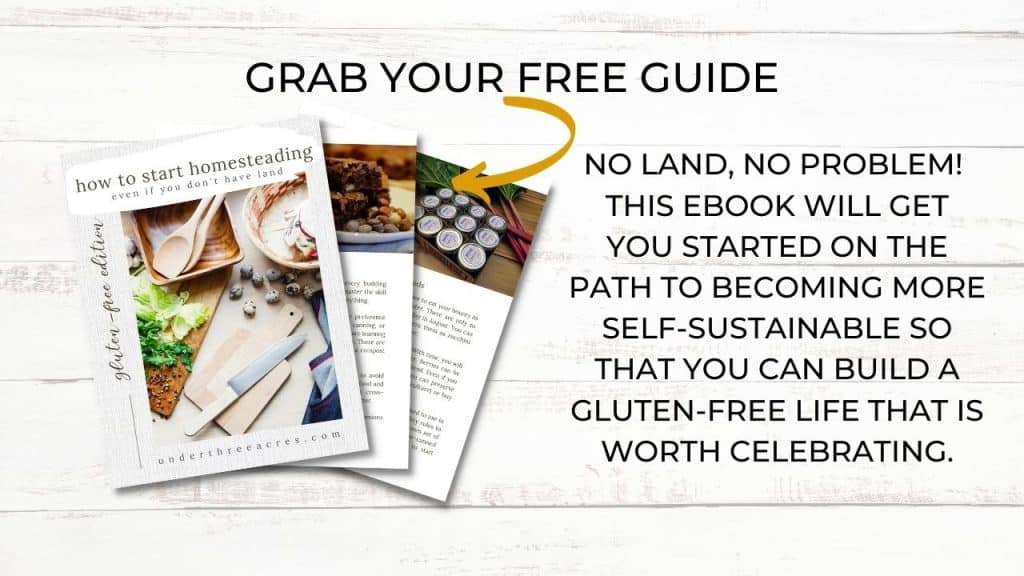
No matter where you are on your gardening journey today, I will be here to support you and cheer you on. Gardening with children can be challenging, especially when you have a toddler who steps on all of the plants, or pulls too hard when picking and pulling up a whole plant. These are things my toddler does, but I know that he is trying and he is learning where his food is coming from and that veggies don’t taste half bad.
Will you be gardening with children this year? What do you love to grow?
Be sure to check us out on Instagram and on our YouTube Channel. We share lots of gardening adventures and tons of wholesome gluten-free recipes. Can’t wait to meet you there.

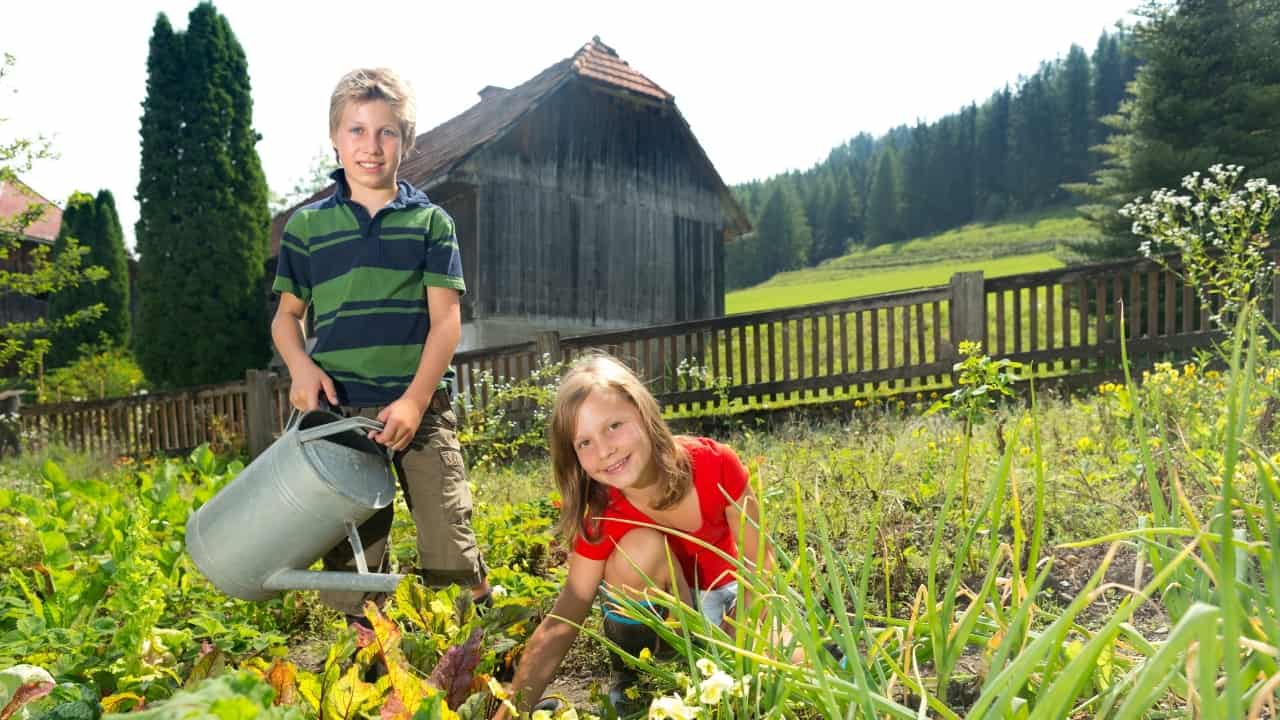
One Comment